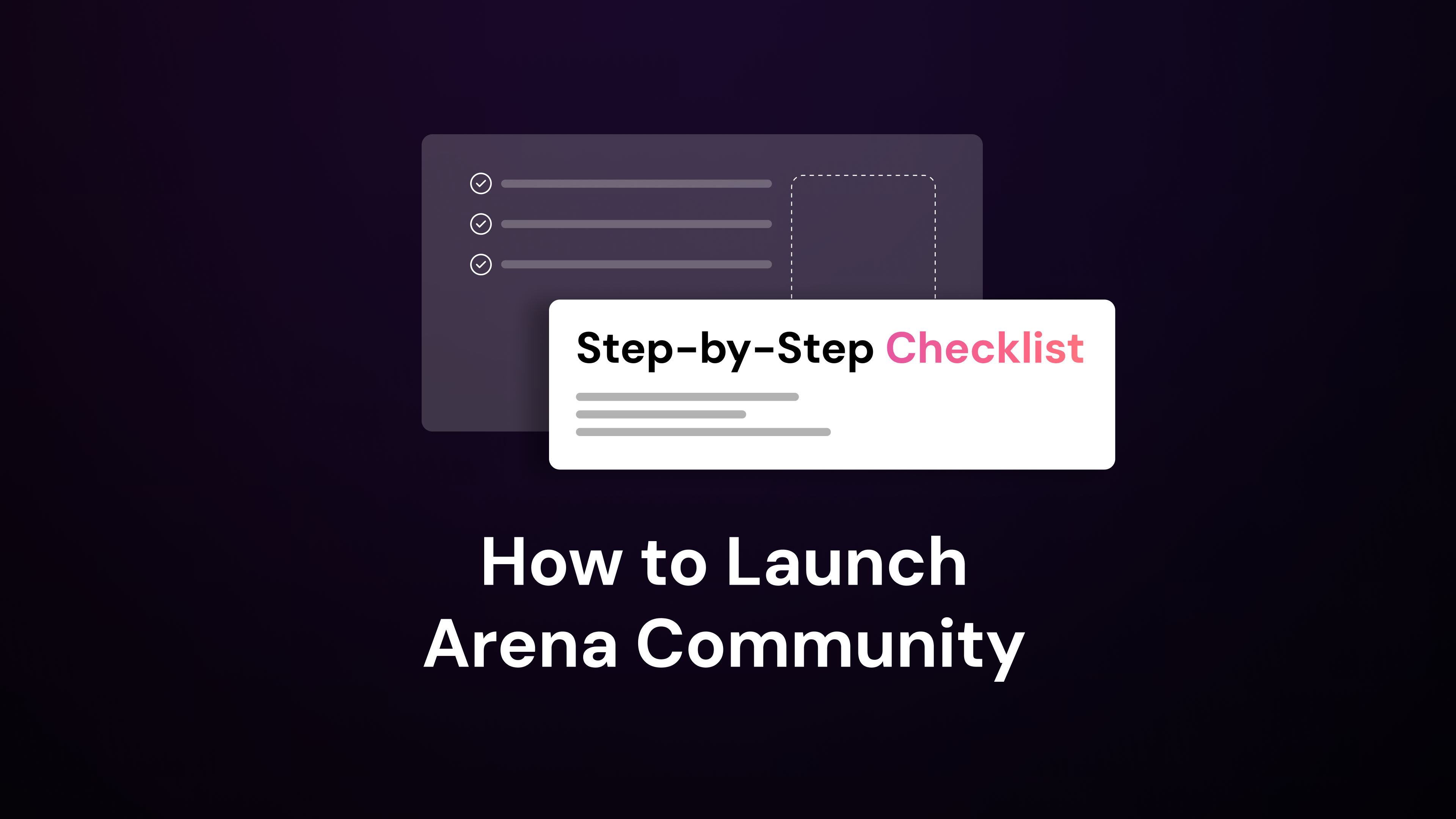When you build a brand community, you can improve customer loyalty and help your business grow significantly. In this guide, we’ll walk you through practical steps that align with your business goals.
What is a Brand Community
A brand community is a group of people who share a common interest in a brand’s products or services.
These successful brand communities serve as notable examples of brand engagement:
- Sephora Beauty Insider: Sephora has created a community offering access to exclusive events, rewards, and product launches, engaging beauty enthusiasts to share insights.
- Peloton Studios: Peloton unites fitness fans through live classes and social media, allowing members to share progress and stay motivated.
- NikePlus: NikePlus offers early access to products and encourages feedback, helping shape future offerings and deepen brand connections.
How to Build a Brand Community: Step-by-Step
1. Understand Your Audience
To create a meaningful brand community, you first need to understand who your audience is and what they care about.
Identify Target Demographics
Start by identifying your ideal members. Define who they are, what they value, and how they relate to your brand. Develop member personas that capture key characteristics such as age, location, interests, and behaviors. Conduct research through interviews, surveys, and analysis of existing customer data to gain insights. Understanding their needs and motivations will help you shape your community. Look at competitors’ communities to see who they engage and potential gaps you can fill.
Analyze Customer Needs and Preferences
Once you’ve identified your target demographics, look deeper into their needs and preferences. Listen to what they are saying about your brand and industry. Engage with your audience on the channels they use, such as social media or forums, and gather feedback directly. Understanding the nuances of customer vs audience engagement can help you tailor your approach effectively. Create content and initiatives that address their interests and align your brand with causes or missions that matter to them to build a stronger connection.
2. Build a Strong Brand Identity
Establishing a strong brand identity sets the foundation for how your audience perceives and connects with your business, playing a significant role in building online communities.
Crafting a Compelling Brand Story
Your brand story represents your company. Understand your audience’s needs and values to create a story that reflects your mission and connects with them. Keep your story authentic and relatable, sharing the journey, challenges, and passion that drive you. Emphasize what sets you apart and focus on unique selling points and benefits. Sharing client successes or employee experiences adds depth to your brand story.
Developing Brand Values and Voice
Defining clear brand values and a consistent voice helps align messaging across platforms. Your values should guide decisions and build trust and understanding. Choose language and tone reflecting your brand’s personality to develop a distinct voice. Team members who embody your brand values become ambassadors, shaping perceptions and maintaining a consistent voice. Embracing an omnichannel customer experience ensures consistency across all customer touchpoints.
3. Engage Your Community
Once you’ve established your brand identity, actively engage your community by offering useful content, encouraging connections, and keeping your audience involved. By applying the community flywheel concept and implementing effective community growth tactics, you can create a self-sustaining cycle of engagement and growth.
Creating Valuable Content
Deliver content that interests your audience, addressing their needs. Share exclusive insights, industry news, or behind-the-scenes looks. Employing effective audience engagement strategies ensures that your content resonates with your community. Consider educational articles, user-generated content, or sneak peeks of upcoming products to engage your audience and optimize conversions with engagement.
Utilizing Social Media Platforms
Meet your audience on platforms they use. Create interaction spaces, like private Facebook groups or LinkedIn communities. Share community content, use branded hashtags, and respond promptly to comments and messages. Effective community building on social media helps you connect with your audience where they are most active.
Hosting Events and Webinars
Organize events to deepen relationships. Host live Q&A sessions, webinars, or virtual meetups to help your audience and encourage interaction. Events can include expert talks or panel discussions, workshops, or AMA sessions. Successfully engaging audiences during events can significantly boost community participation. Implementing successful live shopping strategies can offer interactive experiences that drive engagement and sales.
4. Encourage User-Generated Content
User-generated content increases engagement and strengthens your brand community.
Strategies for Encouraging Participation
Invite members to share stories and experiences. Provide platforms like forums or social media groups where they can connect. Host contests or challenges related to your products. Offer exclusive benefits, like early access or special discounts, to motivate participation. Consider using UGC in events to engage your community further.
Showcasing Community Contributions
Highlighting community contributions recognizes members and inspires participation. Share user-generated content on your channels to showcase creativity and experiences. Recognizing top contributors encourages continued engagement and motivates others. This can help you increase engagement with UGC.

5. Foster a Sense of Belonging
Building a strong brand community starts with creating a sense of belonging among your members.
Building Trust and Credibility
To establish credibility, be authentic, actively listen, highlight successes, and maintain consistency. Doing so builds reliability, the foundation of trust.
Encouraging Interaction and Networking
Facilitate connections by creating open spaces for dialogue, organizing events, promoting user-generated content, and spotlighting community members. Employing effective community growth tactics can help maintain engagement over time.
6. Measure Success and Make Improvements
To ensure your brand community thrives, measure its performance and make necessary improvements.
Setting Key Performance Indicators
Establish KPIs that align with community goals, such as engagement rates, active users, customer retention, and impact on business goals. Regularly tracking audience engagement helps you understand what works and where to adjust.
Gathering Feedback and Implementing Changes
Listen to community members through surveys, direct conversations, and monitoring interactions. Implement changes based on feedback and communicate updates.
7. Challenges and How to Overcome Them
Building a brand community comes with challenges that you must overcome to nurture a successful community.
Dealing with Negative Feedback
Listen actively, respond promptly, and implement changes to show members they’re heard.
Maintaining Engagement Over Time
Offer fresh content, encourage interaction, and recognize contributions to sustain interest.
8. Conclusion and Next Steps
Building a strong brand community involves key steps that enhance engagement and help your business grow.
Summarizing Key Points
- Understand Your Audience: Identify target members and tailor your community.
- Define Your Purpose: Establish goals aligned with your brand’s mission.
- Choose the Right Platform: Select a suitable platform for your audience.
- Create Engaging Content: Develop content that encourages participation.
- Foster Connections: Encourage interactions to build relationships.
- Act on Feedback: Listen to input and make improvements.
- Measure and Optimize: Track key metrics and refine your approach.
Encouraging Action and Growth
Put these strategies into action by analyzing your audience, setting objectives, and choosing a platform that fits your audience. Develop engaging content, facilitate connections, and adapt strategies based on feedback. Regularly monitor performance to identify improvements and ensure community growth.
By following these steps, you’ll build a lively brand community that engages your customers and helps your business succeed in the long run. Start building connections today, and watch your brand grow as your community expands.
Visit Arena’s pricing page to explore our plans and see how we can help you achieve your community goals. Sign up now and start creating unforgettable, personalized experiences for your audience.



